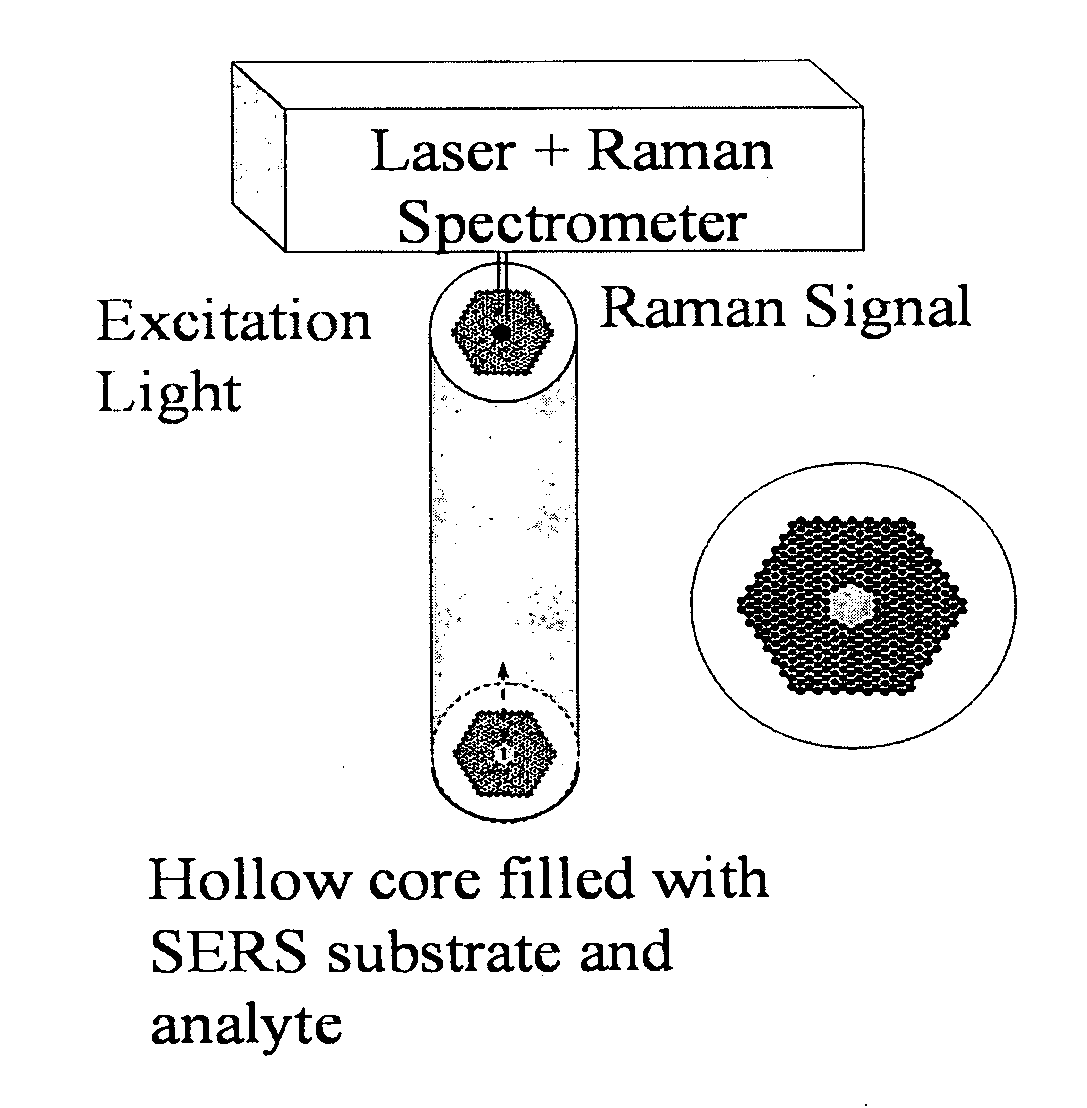Liquid core photonic crystal fiber biosensors using surface enhanced raman scattering and methods for their use
- Summary
- Abstract
- Description
- Claims
- Application Information
AI Technical Summary
Benefits of technology
Problems solved by technology
Method used
Image
Examples
examples
[0081]The invention will be more readily understood by reference to the following examples, which are included merely for purposes of illustration of certain aspects and embodiments of the present invention and not as limitations.
example i
Synthesis of Liquid Core Photonic Crystal Fiber Sensor
[0082]Here we describe an exemplary method developed to fabricate a liquid core photonic crystal fiber (LCPCF) and demonstrate the potential of using the LCPCF SERS sensor for in vitro molecular detection. The LCPCF was fabricated by sealing the cladding holes of a hollow core photonic crystal fiber (HCPCF) while leaving the central core channel open to the outside, then dipping the processed tip into a solution of silver nanoparticles / analyte to fill the core by the capillary action. The HCPCF was purchased from Newport (Photonic Crystal Fiber, Model Air-6-800) (Newport Corporation, Irvine, Calif.). The fiber possessed a good band gap for the excitation wavelength (785 nm) that made it suitable for biomolecular sensing applications (see FIG. 1a). The HCPCF was cut into segments of ˜10 cm in length, with both ends cleaved carefully (FIG. 1b). The cladding holes were sealed by exposing 2-3 mm of one tip of the well cleaved HCPCF i...
example ii
Synthesis of Double Substrate “Sandwich” Structure for Substrate and / or Fiber
[0091]The light source was a 633 nm diode laser inside the Renishaw micro-Raman spectrometer with a Leica microscope and 50× objective. The multi-mode fiber (MMF) used as a SERS probe was purchased from Newport (Model F-MLD-500) (Newport Corporation, Irvine, Calif.). The SNPs coated on the tip passivated with hexanethiol were prepared by using a modified Brust method (Brust et al. (1994) J. Chem. Soc.-Chem. Comm. 801: 1994). Typically, 170 mg of AgNO3 was dissolved in 5 ml of ethanol and kept under constant magnetic stirring. To that mixture, 3 molar equivalents of hexanethiol was added dropwise followed by an addition of 80 ml of toluene. The solution was subsequently reduced with a ten-fold molar excess of NaBH4 in 10 ml of nanopure water. The reduction was allowed to proceed overnight. Afterward, the solution was washed several times with nanopure water to remove any inorganic impurities and the toluene ...
PUM
 Login to View More
Login to View More Abstract
Description
Claims
Application Information
 Login to View More
Login to View More - R&D
- Intellectual Property
- Life Sciences
- Materials
- Tech Scout
- Unparalleled Data Quality
- Higher Quality Content
- 60% Fewer Hallucinations
Browse by: Latest US Patents, China's latest patents, Technical Efficacy Thesaurus, Application Domain, Technology Topic, Popular Technical Reports.
© 2025 PatSnap. All rights reserved.Legal|Privacy policy|Modern Slavery Act Transparency Statement|Sitemap|About US| Contact US: help@patsnap.com



